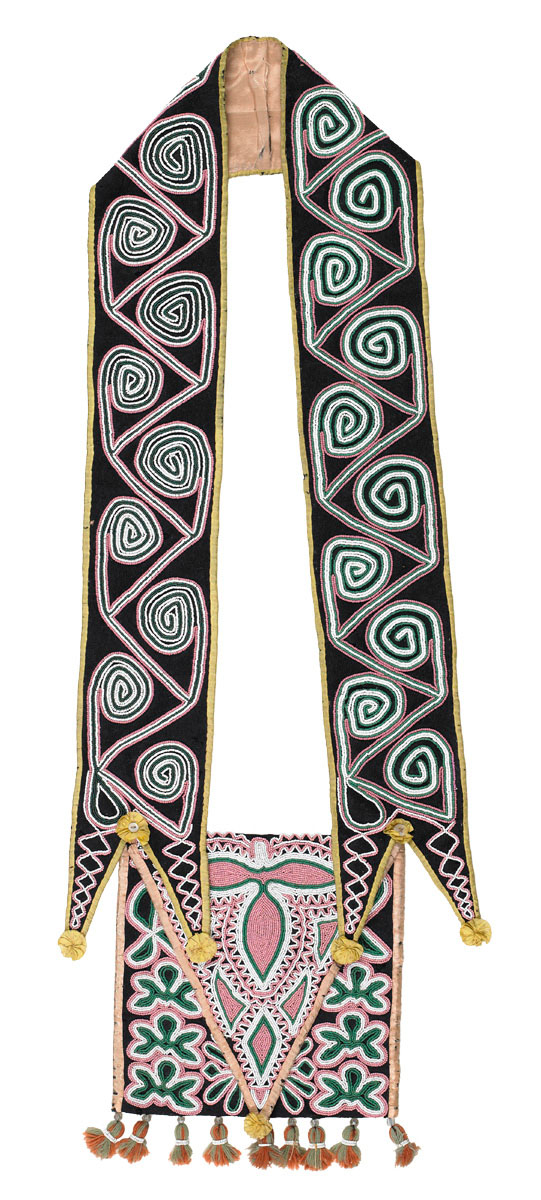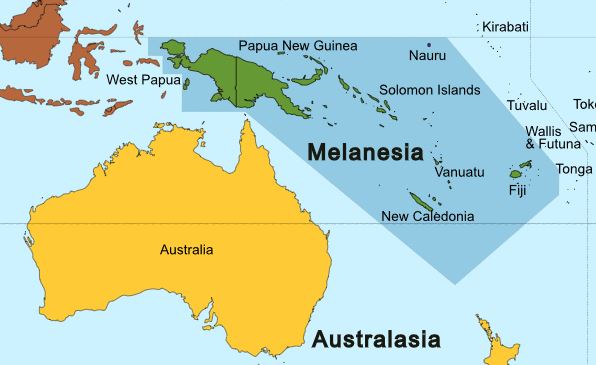|
Tetratonic Scale
A tetratonic scale is a musical scale or mode with four notes per octave. This is in contrast to a heptatonic (seven-note) scale such as the major scale and minor scale, or a dodecatonic (chromatic 12-note) scale, both common in modern Western music. Tetratonic scales are not common in modern art music, and are generally associated with prehistoric music. (Reprinted, New York: Courier Dover Publications, 1991, ). Distribution Native American music Tetratonic scales were common among the Plains Indians, though less common than the pentatonic scale. Amongst the Arapaho, Blackfoot, Crow, Omaha, Kiowa, Pawnee, and Sioux, as well as some Plateau tribes, especially the Flathead, the tetratonic and pentatonic scales used are anhemitonic (that is, they do not include semitones).Bruno Nettl, Victoria Lindsay Levine, and Elaine Keillor (2001), "Amerindian Music", ''The New Grove Dictionary of Music and Musicians'', second edition, edited by Stanley Sadie and John Tyrrell. London: Macmi ... [...More Info...] [...Related Items...] OR: [Wikipedia] [Google] [Baidu] |
Creek Indians
The Muscogee, also known as the Mvskoke, Muscogee Creek or just Creek, and the Muscogee Creek Confederacy ( in the Muscogee language; English: ), are a group of related Indigenous peoples of the Southeastern WoodlandsTranscribed documents Sequoyah Research Center and the American Native Press Archives in the . Their historical homelands are in what now comprises southern , much of , western |
Tritonic Scale
A tritonic scale is a musical scale or mode with three notes per octave. This is in contrast to a heptatonic (seven-note) scale such as the major scale and minor scale, or a dodecatonic (chromatic 12-note) scale, both common in modern Western music. Tritonic scales are not common in modern art music, and are generally associated with indigenous and prehistoric music.Onkar Prasad,Tribal Music: Its Proper Context, in ''Tribal Thought and Culture: Essays in Honour of Surajit Chandra Sinha'', edited by Baidyanath Saraswati, 131–49 (New Delhi: Concept Publishing Company, 1991): 131 (accessed 18 January 2020) Distribution India Early Indian Rig Vedic hymns were tri-tonic, sung in three pitches with no octave: Udatta, Anudatta, and Swarita. Maori In a 1969 study, Mervyn McLean noted that tritonic scales were the most common among the Maori tribes he surveyed, comprising 47% of the scales used. South America The pre-Hispanic '' herranza'' ritual music of the Andes is general ... [...More Info...] [...Related Items...] OR: [Wikipedia] [Google] [Baidu] |
5 Equal Temperament
An equal temperament is a musical temperament or tuning system that approximates just intervals by dividing an octave (or other interval) into steps such that the ratio of the frequencies of any adjacent pair of notes is the same. This system yields pitch steps perceived as equal in size, due to the logarithmic changes in pitch frequency. In classical music and Western music in general, the most common tuning system since the 18th century has been 12 equal temperament (also known as ''12 tone equal temperament'', ' or ', informally abbreviated as ''12 equal''), which divides the octave into 12 parts, all of which are equal on a logarithmic scale, with a ratio equal to the 12th root of 2, (\sqrt 2/math> ≈ 1.05946). That resulting smallest interval, the width of an octave, is called a semitone or half step. In Western countries the term ''equal temperament'', without qualification, generally means '. In modern times, is usually tuned relative to a standa ... [...More Info...] [...Related Items...] OR: [Wikipedia] [Google] [Baidu] |
San People
The San peoples (also Saan), or Bushmen, are the members of any of the indigenous hunter-gatherer cultures of southern Africa, and the oldest surviving cultures of the region. They are thought to have diverged from other humans 100,000 to 200,000 years ago. Their recent ancestral territories span Botswana, Namibia, Angola, Zambia, Zimbabwe, Lesotho, and South Africa. The San speak, or their ancestors spoke, languages of the Khoe, Tuu, and Kxʼa language families, and can be defined as a people only in contrast to neighboring pastoralists such as the Khoekhoe and descendants of more recent waves of immigration such as the Bantu, Europeans, and South Asians. In 2017, Botswana was home to approximately 63,500 San, making it the country with the highest proportion of San people at 2.8%. 71,201 San people were enumerated in Namibia in 2023, making it the country with the second highest proportion of San people at 2.4%. Definition The term "San" comes from the Khoekhoe la ... [...More Info...] [...Related Items...] OR: [Wikipedia] [Google] [Baidu] |
South Africa
South Africa, officially the Republic of South Africa (RSA), is the Southern Africa, southernmost country in Africa. Its Provinces of South Africa, nine provinces are bounded to the south by of coastline that stretches along the Atlantic Ocean, South Atlantic and Indian Ocean; to the north by the neighbouring countries of Namibia, Botswana, and Zimbabwe; to the east and northeast by Mozambique and Eswatini; and it encloses Lesotho. Covering an area of , the country has Demographics of South Africa, a population of over 64 million people. Pretoria is the administrative capital, while Cape Town, as the seat of Parliament of South Africa, Parliament, is the legislative capital, and Bloemfontein is regarded as the judicial capital. The largest, most populous city is Johannesburg, followed by Cape Town and Durban. Cradle of Humankind, Archaeological findings suggest that various hominid species existed in South Africa about 2.5 million years ago, and modern humans inhabited the ... [...More Info...] [...Related Items...] OR: [Wikipedia] [Google] [Baidu] |
Minor Third
In music theory, a minor third is a interval (music), musical interval that encompasses three half steps, or semitones. Staff notation represents the minor third as encompassing three staff positions (see: interval (music)#Number, interval number). The minor third is one of two commonly occurring thirds. It is called ''minor'' because it is the smaller of the two: the major third spans an additional semitone. For example, the interval from A to C is a minor third, as the note C lies three semitones above A. Coincidentally, there are three staff positions from A to C. Diminished third, Diminished and augmented thirds span the same number of staff positions, but consist of a different number of semitones (two and five). The minor third is a skip (music), skip melodically. Notable examples of ascending minor thirds include the opening two notes of "Greensleeves" and of "Light My Fire". The minor third may be derived from the Harmonic series (music), harmonic series as the interva ... [...More Info...] [...Related Items...] OR: [Wikipedia] [Google] [Baidu] |
Ghana
Ghana, officially the Republic of Ghana, is a country in West Africa. It is situated along the Gulf of Guinea and the Atlantic Ocean to the south, and shares borders with Côte d’Ivoire to the west, Burkina Faso to the north, and Togo to the east. Ghana covers an area of , spanning diverse ecologies, from coastal savannas to tropical rainforests. With nearly 35 million inhabitants, Ghana is the second-most populous country in West Africa. The capital and largest city is Accra; other significant cities include Tema, Kumasi, Sunyani, Ho, Cape Coast, Techiman, Tamale, and Sekondi-Takoradi. The earliest kingdoms to emerge in Ghana were Bonoman in the south and the Kingdom of Dagbon in the north, with Bonoman existing in the area during the 11th century. The Asante Empire and other Akan kingdoms in the south emerged over the centuries. Beginning in the 15th century, the Portuguese Empire, followed by other European powers, contested the area for trading r ... [...More Info...] [...Related Items...] OR: [Wikipedia] [Google] [Baidu] |
Melanesia
Melanesia (, ) is a subregion of Oceania in the southwestern Pacific Ocean. It extends from New Guinea in the west to the Fiji Islands in the east, and includes the Arafura Sea. The region includes the four independent countries of Fiji, Vanuatu, Solomon Islands, and Papua New Guinea. It also includes the West New Guinea, Indonesian part of New Guinea, the French overseas collectivity of New Caledonia, and the Torres Strait Islands. Almost all of the region is in the Southern Hemisphere; only a few small islands that are not politically considered part of Oceania—specifically the northwestern islands of Western New Guinea—lie in the Northern Hemisphere. The name ''Melanesia'' (in French, ''Mélanésie'') was first used in 1832 by French navigator Jules Dumont d'Urville: he coined the terms ''Melanesia'' and ''Micronesia'' to go alongside the pre-existing ''Polynesia'' to designate what he viewed as the three main Ethnicity, ethnic and geographical regions forming the Pacif ... [...More Info...] [...Related Items...] OR: [Wikipedia] [Google] [Baidu] |
Ditonic Scale
A ditonic scale is a musical scale or mode with two notes per octave. This is in contrast to a heptatonic (seven-note) scale such as the major scale and minor scale, or a dodecatonic (chromatic 12-note ) scale, both common in modern Western music. Ethnomusicologist Bruno Nettl noted that ditonic scales were common in many parts of the world but often limited to specific music types, such as children's songs, with the exception of some tribal societies. Distribution Russia The Cheremis (Mari people) of Russia employ ditonic scales in children's songs, generally with the two notes a minor third apart. Nettl theorised that these ditonic songs may be a remnant of a more archaic form of music. Peru The Shipibo people of Amazonian Peru used ditonic scales in approximately 2.5% of their music. The ditonic was found "almost exclusively in the complex ostinato songs." Vietnam The '' ca dao'' folk poetry of Vietnam is sometimes sung in ditonic scales. North America Several ... [...More Info...] [...Related Items...] OR: [Wikipedia] [Google] [Baidu] |
Tritonic
A tritonic scale is a musical scale or mode with three notes per octave. This is in contrast to a heptatonic (seven-note) scale such as the major scale and minor scale, or a dodecatonic (chromatic 12-note) scale, both common in modern Western music. Tritonic scales are not common in modern art music, and are generally associated with indigenous and prehistoric music.Onkar Prasad,Tribal Music: Its Proper Context, in ''Tribal Thought and Culture: Essays in Honour of Surajit Chandra Sinha'', edited by Baidyanath Saraswati, 131–49 (New Delhi: Concept Publishing Company, 1991): 131 (accessed 18 January 2020) Distribution India Early Indian Rig Vedic hymns were tri-tonic, sung in three pitches with no octave: Udatta, Anudatta, and Swarita. Maori In a 1969 study, Mervyn McLean noted that tritonic scales were the most common among the Maori tribes he surveyed, comprising 47% of the scales used. South America The pre-Hispanic '' herranza'' ritual music of the Andes is generally t ... [...More Info...] [...Related Items...] OR: [Wikipedia] [Google] [Baidu] |
Mervyn McLean
Mervyn is a masculine given name and occasionally a surname which is of Old Welsh origin, with elements ''mer'', probably meaning "marrow", and ''myn'', meaning "eminent". Despite the misconception of the letter 'V' being an English spelling, through Roman occupation of Britain, the Welsh language (at least for spelling) was Latinised and through centuries of evolution of the Welsh language, the modern Welsh spelling for Mervyn is Merfyn. People with the given name * Mervyn or Merfyn Frych, king of Gwynedd () * Mervyn Archdall (other), various persons * Mervyn S. Bennion (1887–1941), US Navy captain killed in the attack on Pearl Harbor, posthumously awarded the Medal of Honor * Mervyn Bishop (born 1945), professional photographer, the first Aboriginal Australian to work on a metropolitan daily newspaper * Mervyn Carrick (born 1946), Northern Ireland politician * Mervyn Davies, Baron Davies of Abersoch (born 1952), former banker and UK government minister * Mervyn Dav ... [...More Info...] [...Related Items...] OR: [Wikipedia] [Google] [Baidu] |




